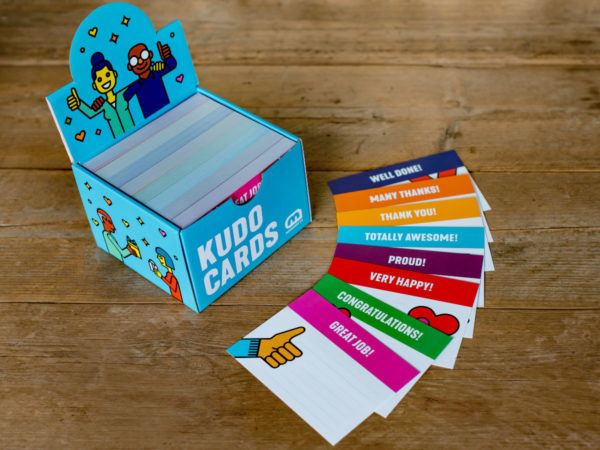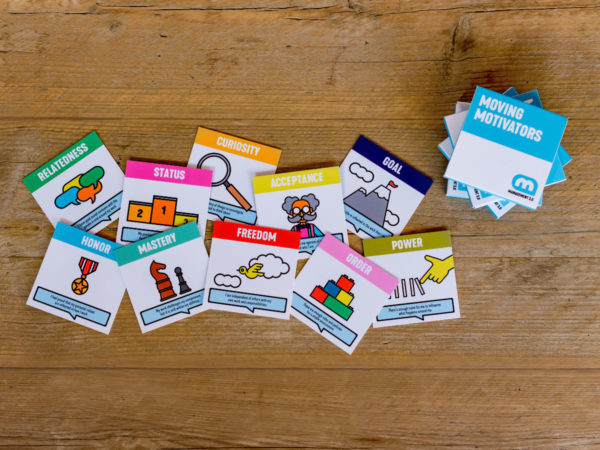Management 3.0 tools and practices are great to be used in Sprint Retrospectives. Why is that? We asked Management 3.0 Facilitators, Rie Fujimitsu, Transformation consultant and Scrum Master from Japan and Juan Mello, Agile Lead & Coach from Uruguay, to share their experiences and best practices.
What is a retrospective?
A retrospective is a scrum event for scrum teams, which is held at the very end of every sprint (btw: important to mention that it became very well known for Scrum, but is not limited to it).
It is held to reflect the process of our work and figure out Kaizen action for the next sprint. A retrospective is important because relentless improvement is the key essence of agile. Without retrospectives a team can hardly improve their processes, cannot gain velocity, they can feel stress and happiness will get worse.
Management 3.0 has many powerful tools for better, more efficient and fun retrospectives, so we recommend every Scrum Master learn about and utilize Management 3.0 practices to deliver meaningful retrospectives.
Retrospective Example: During my assignment as a Scrum Master in a large organization, I chose Celebration Grid at Sprint Retrospective for one multi-national scrum team.
The Celebration Grid is a diagram and a nice way to visualize what you learned during the last sprint. Fill out the Celebration Grid together as a team during your Retrospective and then use it as a basis for discussion. Celebrate what you’ve learned and what experiments and adventures you’ll head toward next!
One local member pointed out that there is a huge gap of information and understanding from within the team and outside the team although we need to work very closely with everyone. Another member from a global team, who usually keeps silent during retros, unmuted and said: “I totally agree with you. We have to fix this situation.”
Because of language barriers, these two members had few one-to-one communications, but they both had the same perception of the issue.
This conversation changed the teams’ atmosphere, and they started to consider this issue a serious impediment for the team. Although another item was chosen for the Kaizen action for the next sprint, the team agreed to deal with this issue in the mid-long term, and the item was put into our Impediment Board by the Scrum Master.
Learn more about the Celebration Grid
The Niko-Niko Calendar is a grid calendar that is filled out at the end of each day by each team member to indicate if it was a good or bad day. It can be used in different ways in a retrospective.
First, it can be used during check-in: How does the team feel when the retro starts? This simple question works as a great warm-up and connector and gives you as a facilitator, great input into the team’s mood.
In addition to that, the Niko-Niko Calendar is also a great conversation trigger: If your team has been using it for some days/weeks, you as a Scrum Master can present the partial results in the retro and a significant conversation can take place. What does the team think about it? What things that happened influence these results? Should we do something about this as a team?
Learn more about the Niko-Niko Calendar

In a very similar way to the Niko-Niko calendar, but at the same time different, the Happiness Door practice can be used to know how the team is leaving the retrospective meeting.
For the facilitator of the retrospective, it’s very important to have the team’s feedback, especially honest and timely feedback.
Besides knowing what went well and not so well about the retro, you can ask for examples about the action items agreed upon in the retrospective. Is the team feeling good with them? Are they confident with them?
Learn more about the Happiness Door
A great way to close your retrospective with positive energy is to ask your team to recognize the important and valued things made by them in the current iteration/Sprint.
Kudo Cards can help with this objective because in an easy and funny way, everyone can get to know each other and enjoy smiles and laughs.
Lallia Cherif, Management 3.0 Facilitator from Morocco, adds another idea for a fun retrospective game: “Improv cards can be very powerful at the end of a sprint or after a release to reflect on how the team experienced the last period – all in a less formal way and by building on each other’s ideas.” Improv Cards are a set of colorful cards to spark conversations in a playful way. You can order them in our shop or play online during your remote or hybrid retro!
Diversity is key in complex adaptive systems as all the different opinions, ideas and visions will help the team find better strategies and practices.
With this in mind, the Diversity Index practice can be used as a check-in game for your retrospective.
In about 20 minutes, the team can learn how diverse they are, and, if they consider it necessary, they can think of actions to increase people’s understanding of what diversity entails.
Learn more about the Diversity Index
Another Retrospective example: I was leading another scrum team as Scrum Master, when I realized the atmosphere of the team was not good enough to do a retrospective and execute Kaizen. I decided to spend time on team building instead and chose Moving Motivators.
Each member chose three motivators out of ten and located each of their satisfaction levels, taking turns to share their motivations. There were reaffirmations and surprises during the sharing, and it was very good that all the members spoke openly about themselves. One member, who was a bit depressed with relationships within the team, mentioned that her top motivators are acceptance and relatedness, and looked at renewing her confidence by insisting on what she values. At the end of team building, I told the team to respect each members’ motivators, and use that knowledge to make the most of how we communicate with each other to become a better team.
This Moving Motivators activity was a very good opener for the team to build better relationships.
Sometimes you as a Scrum Master might find timings when team buildings are more critical than retrospectives. Don’t worry, Management 3.0 also has plenty of tools for teambuilding. You can also use the same tools repeatedly as results won’t be the same because teams’ situations are never the same.
This retro practice is focused on experiments and learning.
It works very well with the Celebration Grid as its two main Yay! questions are:
- What did we do well? (by following practices)
- What did we learn? (by running experiments)
Helping teams focus on what they learned and what went well is an effective strategy to give a more positive approach to your retrospective!
Learn more about Yay! Questions
Is your team needing cross-skilled team members (aka T-shaped skills)? Have you detected that you as a team are having issues or gaps with your individual expertise and competencies? Well, you should try this practice in your next retrospective.
In addition to completing the matrix proposed by the practice, the invitation to the team is to think and discuss ideas to reveal the action items, however small, that can be done immediately (next Sprint) to start narrowing these gaps.
Learn more about the Team Competency Matrix

In a nutshell: Management 3.0 practices for your retrospective
Gain a better image and understanding of retrospectives with Management 3.0 tools by going through our experiences. When you succeed to let the team members speak with Management 3.0 tools, a kind of magic happens and that is the best thing about a Scrum Masters’ work.
Header Photo by Ferenc Horvath on Unsplash






“Discover 9 Practices from the Management 3.0 Toolbox for your next Retrospective” was the link from the mail. Im curious what no. 9 is.
The blue box – Improv Cards 🙂 (We counted twice)
Loved the used of Niko Niko Calendar during the retrospectives! I have once used it, but we look/fill it out at every daily meeting.